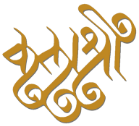Explore the Kathak Chakkars – Types and Technique
Kathak, a classical dance form originating from northern India, is a mesmerizing blend of rhythmic footwork, intricate hand gestures, and graceful expressions. With its rich history rooted in traditional storytelling and devotion, Kathak has evolved into a dynamic art that beautifully harmonizes tradition and innovation. Dancers, adorned in vibrant costumes, use precise movements and emotive nuances to convey narratives, making Kathak a captivating cultural experience that transcends time and borders. Among the countless dance forms, Kathak holds a distinct place, captivating audiences with its intricate footwork, expressive storytelling, and mesmerizing spins known as “chakkars.” The chakkars technique in Kathak is more than just a dazzling display of virtuosity; it is a powerful tool that enriches storytelling, adds complexity to rhythmic patterns, and showcases the synergy between graceful movements and rhythmic precision. What are Spins or Chakkars in Kathak? “Spins” or “chakkars” in Kathak refer to rapid and graceful rotations executed by dancers. These intricate movements are a hallmark of the dance style, showcasing the dancer’s control, balance, and artistry as they spin with precision and fluidity, adding a dynamic and captivating element to the performance. Technique to Do Chakkars and Spin in Kathak Performing chakkars (spins) in Kathak involves precise skill. Begin with a strong stance, fix your gaze, and extend your arms gracefully. As you spin, keep your balance centered and maintain control over the speed. Utilize the core muscles to control the spin’s axis and manage dizziness. Regular practice enhances balance and coordination, allowing dancers to master these elegant and exciting rotations that are an integral part of Kathak performances. It’s important to take guidance from a proficient Kathak dance teacher to acquire the accurate method and form when learning chakkars. Types of Chakkars or Spins in Kathak 1 Step Chakkar / Spin The “One step chakkar” in Kathak involves executing a single spin while moving forward or backward. This versatile step seamlessly integrates spins into a dance sequence, maintaining the rhythm and energy of the performance. It’s commonly used for graceful entrances or exits, adding elegance to the choreography. The one step chakkar showcases the dancer’s ability to spin with precision while incorporating movement, contributing to the dynamic and captivating nature of Kathak dance. 3 Step Chakkar / Spin (तत तत थई) The “Three-step chakkar” in Kathak is performed in 3 steps. This intricate step showcases a dancer’s agility, balance, and control. It’s often utilized as a dynamic element within a performance, creating a visually captivating moment. The three-step chakkar can punctuate a sequence, highlight rhythm changes, or express excitement. Its rapid rotations and precise footwork contribute to the charm and complexity of Kathak dance. 4 Step Chakkar / Spin (ता थई थई तत / आ थई थई तत) The “Four-Step Chakkar” in Kathak, a classical Indian dance form, involves intricate footwork and graceful turns. This can be executed in four steps, creating a dynamic visual effect. They serve multiple purposes within a performance, adding complexity, rhythm, and elegance. Chakkars enhance storytelling in kathak by depicting various emotions and characters, captivating the audience. They also showcase the dancer’s skill and control, highlighting the fusion of proficiency and artistic expression that defines Kathak. 5 Step Chakkar / Spin (तिगदा दिग दिग थई) The “Five-step chakkar” in Kathak is widely used which can be performed in 5 steps. It shows the dancer’s mastery over balance and coordination. This complex step is employed to bring a sense of drama and flair to a performance. It’s often used during fast-paced segments or climactic moments in choreography. The five-step chakkar demands advanced technical skill and control, and its inclusion showcases the dancer’s ability to maintain grace and precision while executing challenging rotations within the artful realm of Kathak. Importance of Chakkars or Spin in Kathak Dynamic Expression Chakkars infuse energy and dynamism into Kathak performances. They create a visually captivating element that adds excitement and intensity to the dance, captivating the audience’s attention. Technical Proficiency Mastering chakkars showcases a dancer’s technical prowess. Achieving multiple rotations while maintaining poise requires impeccable balance, control, and coordination, reflecting the dancer’s skill and dedication. Cultural Significance Chakkars have cultural significance in Kathak, often symbolizing the cyclic nature of life, seasons, and cosmic rhythms. Through spins, dancers connect with ancient storytelling traditions and convey deeper meanings within their performances. Artistic Flourish Chakkars are an artistic flourish that demonstrates a dancer’s artistry and finesse. The precision and grace with which spins are executed contribute to the overall aesthetics of the performance, elevating the beauty and elegance of the dance. Conclusion In essence, the captivating spins, or “chakkars,” of Kathak dance form an intricate tapestry of dynamic expression, technical prowess, cultural depth, and artistic finesse. These graceful rotations, whether the one-step, three-step, four-step, or the complex five-step chakkar, embody the heart of Kathak’s charm. As dancers spin, they not only mesmerize audiences with their skill but also connect with ancient traditions, infusing each performance with stories, seasons, and cosmic rhythms. For those seeking to embark on this rhythmic journey, Kalashri – Kathak Classical Dance Academy stands as a beacon, offering expert guidance to master the enchanting art of Kathak chakkars.For more information and to begin your Kathak journey, contact us! Share this post if you find it useful – Previous PostNext Post More than 2 results are available in the PRO version (This notice is only visible to admin users) Have Questions Unleash the Grace of Kathak Dance! Enroll Now for Inspiring Kathak Dance Classes and Embark on a Journey of Rhythmic Elegance. Call Us Now Kalashri Acadamy of Kathak Kathak
Explore the Kathak Chakkars – Types and Technique Read More »






